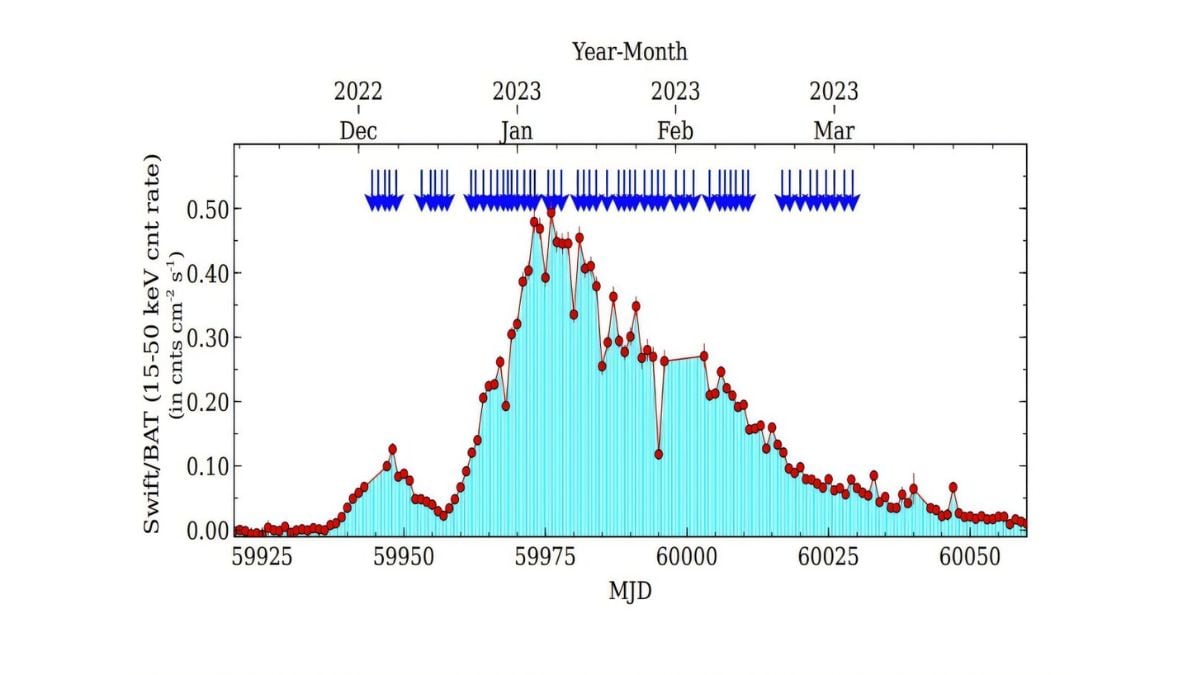
Wuhan College’s astronomers made use of the insight-HXMT satellite tv for pc for learning a big outburst that occurred 3 years in the past within the X-Ray binary RX J0440.9+4431. The findings had been launched on July 24, 2025 on arXiv, and supplied an in depth remark of the system’s properties and the exercise on the time of the occasion. X-Ray binaries are the pairs of the celebs and shine brighter in X-Rays. In such a state of affairs, one star both white dwarf or the conventional one, transfers the mass to the compact object, which generally is a black gap or neutron star. XRB will be separated into two: low mass X-Ray binaries and excessive mass X-Ray binaries on the idea of the donor star.
X-ray Outburst in Be/X-ray Binary System
According to Phys org, BeXRBs are a sort of HMXB during which optical companion star is a Be star and generally is a dwarf, large or subgiant. On the remark and evaluation of X-Ray outbursts from these techniques it will be significant for shaping the data of how X-ray binaries wrks and adjustments over time.
RX J0440.9+4431 Exhibits Luminosity-Pushed Pulse Profile Modifications
RX J0440.9+4431 is a Be high-mass X-ray binary star system first noticed in 1997 when the ROSAT Galactic Aircraft Survey revealed the optical companion star LS +44 17/BSD 24-491. Nestled about 8,000 mild years away, the system accommodates a neutron star pulsar that flashes X-rays with a gradual 202.5-second interval.
Throughout the finish of December 2022, a large outburst developed from RX J0440.9+4431, and peaked in brightness and lasted until March 2023. To additional examine the occasion and the X-Ray timing with spectral adjustments, the astronomers Wei Wang and Prahlad R. EPili modified the insight-HXMT telescope on the supply at completely different factors on the time of the outburst.
“The Perception-HXMT has noticed this supply at a number of cases of the complete outburst in 2022–2023. We used these brilliant outburst observations of the pulsar to review its X-ray spectral and timing variability,” the researchers famous of their publication. Analyses of the information confirmed that, even on the similar luminosity through the outburst rise and subsequent decay, the heartbeat profiles retained related form adjustments.
